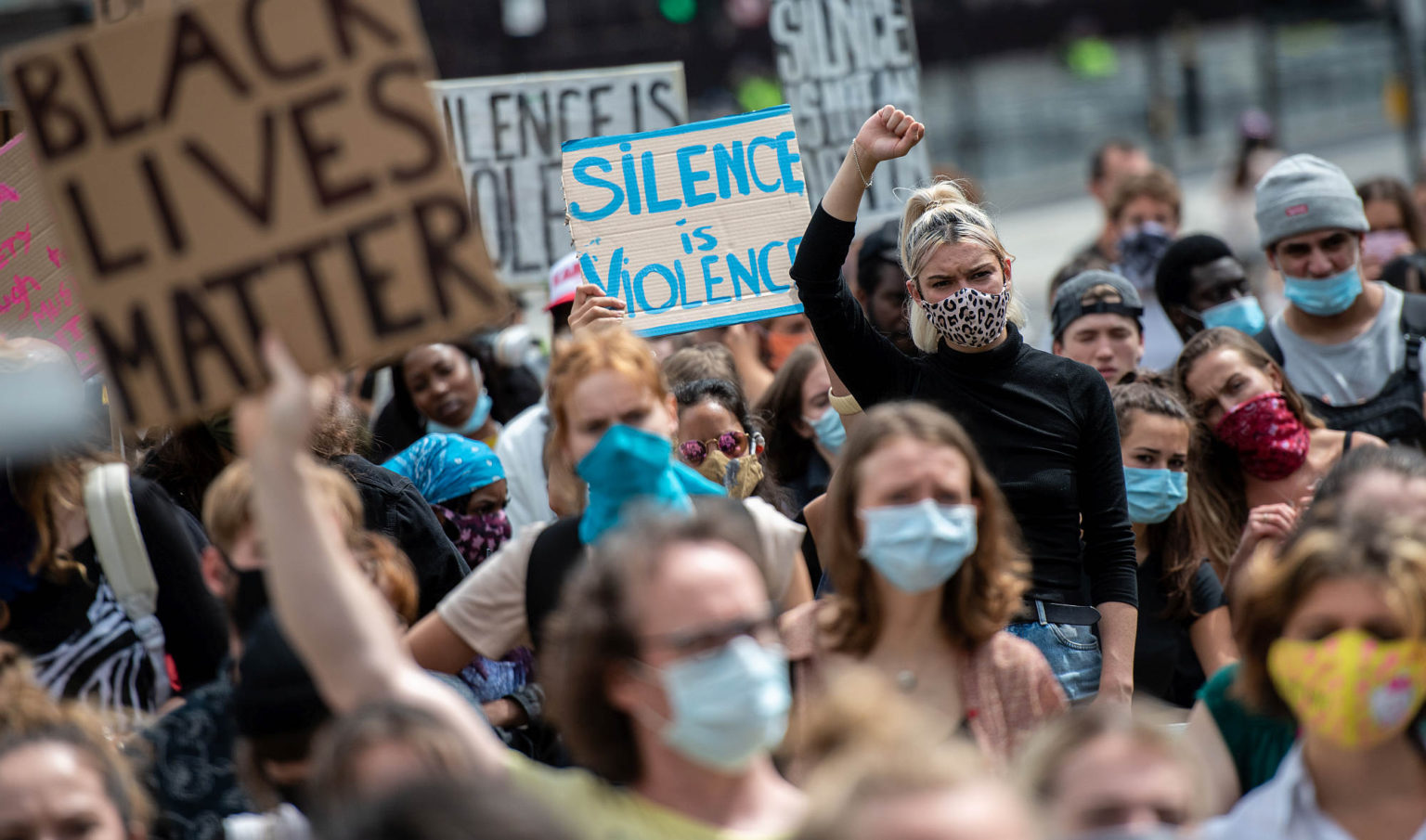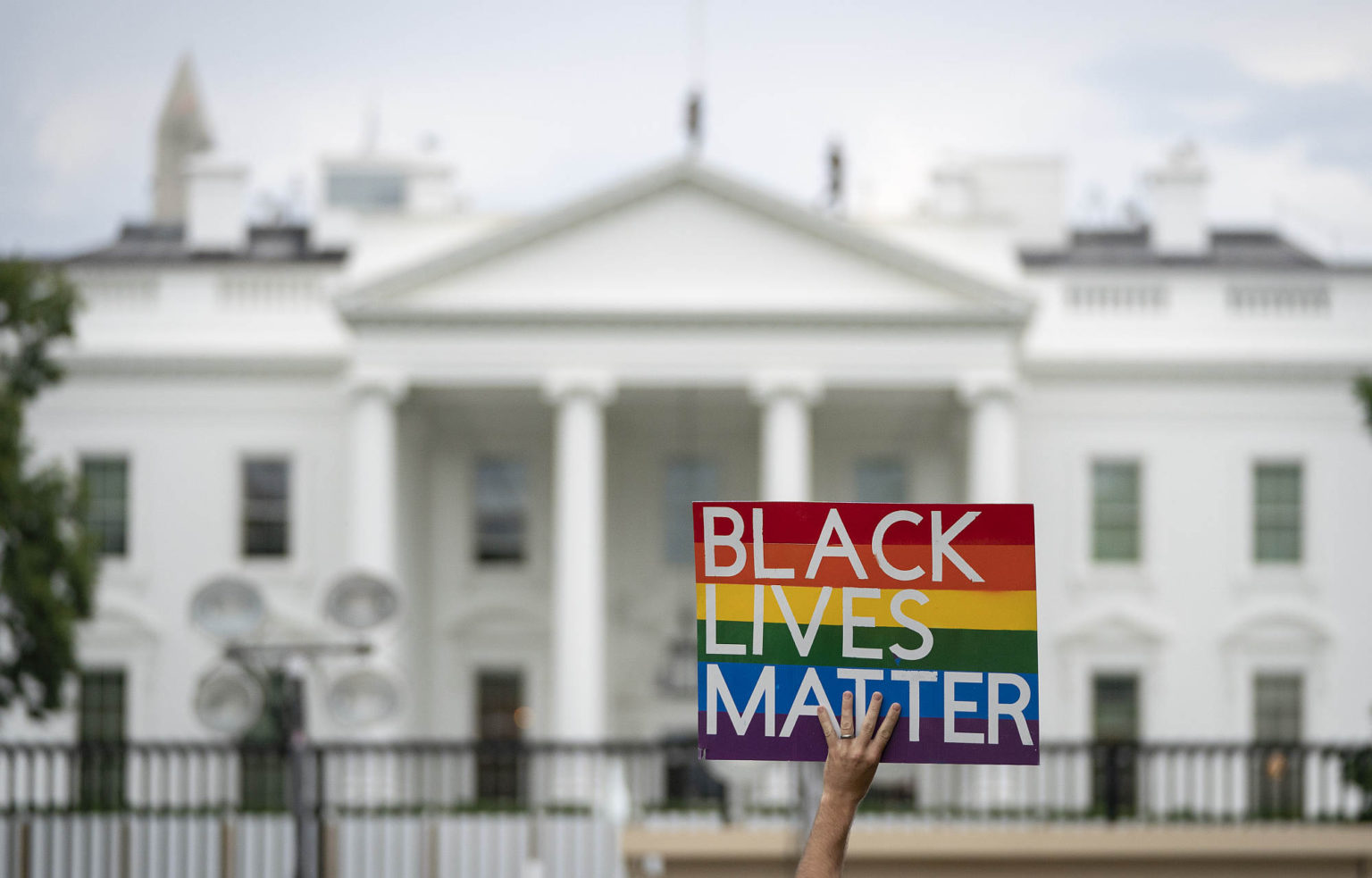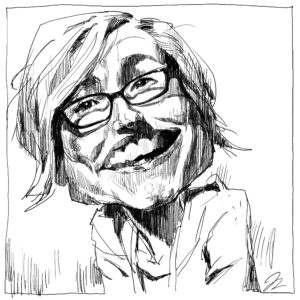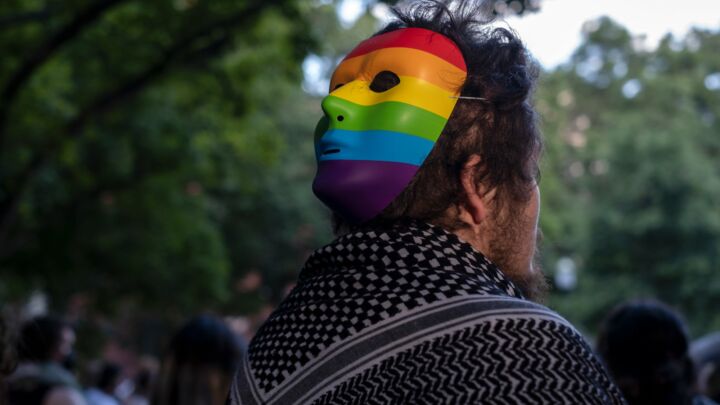
Long-read
Critical race theory: a ruling-class ideology
It is embraced by today's political and cultural elites because it serves their interests.
Want to read spiked ad-free? Become a spiked supporter.
2020 has been shaped by two things. Coronavirus – and our response to it – has dominated every aspect of our lives. But something else has gripped us this year, too: anti-racism. In May, shocked by the killing of George Floyd at the hands of a Minneapolis police officer, people all around the world emerged from lockdown to participate in Black Lives Matter (BLM) protests. In the UK, statues fell, public figures knelt in solidarity and many people blacked out their social-media posts for a day. Schools, universities and workplaces stepped up diversity training and anti-racist initiatives.
There have been protests against racism in the past, of course. But this year has been different. Never before have people on every continent, in countries and towns facing their own unique problems, turned out in such huge numbers to support the same cause. Never before have books like White Fragility, Why I’m No Longer Talking To White People About Race and How To Be An Antiracist become international bestsellers. And never before has a protest movement had such establishment backing. In the UK, BLM has been publicly endorsed by the royal family, the football Premier League, and senior politicians. Multinational corporations have got in on the act, too. Ice-cream maker Ben and Jerry’s has pledged to do all it can to dismantle white supremacy, while elite universities have issued statements denouncing their own institutional racism.
The mainstreaming and elite-backing of anti-racism initiatives speaks to a new understanding of racism. Critical race theory (CRT) used to be a minority pursuit, an obscure academic interest. In 2020 it provided the rationale for protests, books, diversity workshops and school lessons. In June, Channel 4 screened The School That Tried to End Racism, a documentary series that followed the progress of children made to undergo an anti-racist re-education programme based upon principles of CRT. New phrases entered our vocabulary. Terms like systemic racism, unconscious bias, white privilege, cultural appropriation, reparations, microaggression and intersectionality migrated from academics and activists to newspapers, radio discussions, charity campaigns and school lessons. President Trump and Kemi Badenoch, the UK’s minister for equalities, made speeches explicitly naming CRT and calling out its perniciousness.
What is Critical Race Theory?
CRT begins with a challenge to the ‘scientific’ racism of the 19th and early 20th century. In the days of empire, colonial exploitation and slavery were justified by a belief that white people were physically, mentally and morally superior to the people they ruled over. This view extended to the working class at home, who were portrayed as genetically distinct from and inferior to the upper class. This biological understanding of race began to be called into question after the Second World War, although its legacy continued to play out in Apartheid-era South Africa, Jim Crow laws in the American South and discrimination in the UK.
Critical race theorists are not the first to point out that race is socially constructed; that is, it is not a naturally occurring phenomenon but created and made meaningful by people collectively, over time and place. Few today disagree with this point. But whereas a previous generation of anti-racists challenged the social significance attributed to biological differences to argue that there was one race, the human race, and emphasised universal traits that create a common humanity irrespective of skin colour, critical race theorists argue that, once constructed, race becomes an incontestable fact. As Robin Di Angelo explains in White Fragility: ‘While there is no biological race as we understand it, race as a social construct has profound significance and shapes every aspect of our lives.’ (1)

When race is seen in this way, racism is understood as systemic; that is, built into the very fabric of societies designed by white people, for the benefit of white people. Proponents of CRT argue that ideas of white superiority and black inferiority are intrinsic to our language, culture and interpretations of history. Every aspect of our daily lives, from education, policing, the health service and employment assumes a white norm, they argue, and this makes a mockery of equality before the law and the liberal notion of equality of opportunity. As Reni Eddo-Lodge explains in Why I’m No Longer Talking to White People About Race: ‘If you’re white, your race will almost certainly positively impact your life’s trajectory in some way. And you probably won’t even notice it.’ In an inescapably circular argument, race is constructed and made meaningful through racism; it is people’s everyday experiences within a racist society that create the reality of race.
The Origins of Critical Race Theory
CRT is newly fashionable and highly influential, but it has a long and complex history. Its origins can be traced back to a divide within the US civil-rights movement. Free speech, democracy and legal equality were initially considered integral to the fight for civil rights, but by the end of the 1960s, with progress appearing to have stalled and both racism and poverty still major problems, groups within the movement began to question the efficacy of these principles. Many arrived at the conclusion that legal equality not only left social inequality intact but actually provided the context and justification for its continuation. As the authors of Words That Wound, a key CRT text published in 1993, point out:
‘It became apparent to many who were active in the civil-rights movement that dominant conceptions of race, racism, and equality were increasingly incapable of providing any meaningful quantum of racial justice.’
Having come up against the limits of formal, legal equality, the question facing the civil-rights movement at this point was how best to achieve social equality. As Helen Pluckrose and James A Lindsay point out in Cynical Theories, more materialist activists focused on housing, schooling, employment and income. For some, this led to championing black nationalism and segregation over universal human rights. At the same time, some began to find a home within academia where, to quote Words that wound:
‘individual law teachers and students committed to racial justice began to meet, to talk, to write, and to engage in political action in an effort to confront and oppose dominant societal and institutional forces that maintained the structures of racism while professing the goal of dismantling racial discrimination.’
These academic activists argued that ‘majoritarian self-interest’ was ‘a critical factor in the ebb and flow of civil-rights doctrine’; in other words, a white-majority society would be unlikely to cede its power voluntarily (1). A key text to come out of this period was by Derrick Bell, Harvard’s first African American professor. In Race, Racism and American Law, published in 1970, Bell argued that white people only concede rights when it is in their interests to do so. By 1987, his views had crystalised further and he was able to explain that, ‘progress in American race relations is largely a mirage obscuring the fact that whites continue, consciously or unconsciously, to do all in their power to ensure their dominion and maintain their control’.
Black scholars found common cause with professors engaged in critical legal studies who sought to formulate a radical left-wing critique of dominant liberal approaches to the law. Together, they drew from ‘liberalism, Marxism, the law-and-society movement, critical legal studies, feminism, poststructuralism/postmodernism, and neopragmatism’. A key aim was to examine ‘the relationships between naming and reality, knowledge and power’ (2). This marked a splintering from the materialists and a distinct turn towards subjectivity. It led to racism being understood not just as legal and economic inequalities, but as social, cultural and psychological practices. At this point, as Matsuda et al tell us, ‘Scholars of colour within the left began to ask their white colleagues to examine their own racism and to develop oppositional critiques not just to dominant conceptions of race and racism but to the treatment of race within the left as well’. Their conclusions presented racism, ‘not as isolated instances of conscious bigoted decision-making or prejudiced practice, but as larger, systemic, structural, and cultural, as deeply psychologically and socially ingrained’ (3).
In 1981, Kimberlé Crenshaw, then a student of Derrick Bell’s, led a protest against Harvard Law School when it refused to hire a black professor to teach Race, Racism and American Law following Bell’s departure. Crenshaw, along with others, invited leading academics and practitioners of colour to lecture on a course aimed at ‘developing a full account of the legal construction of race and racism’. Bringing people together in this joint intellectual project crystalised the ideas underpinning critical race theory. By the end of the 1980s, Crenshaw’s work led her to devise a framework she labelled ‘intersectionality’ to describe how multiple features of a person’s identity can combine to create different modes of discrimination and privilege. Her 1991 essay, Mapping the Margins: Intersectionality, Identity Politics and Violence Against Women of Colour, has been especially influential.

Pluckrose and Lindsay point out that the concerns of materialists dominated the critical race movement from the 1970s to the 1980s. However, by the 1990s, a more identity-focused and postmodern understanding of CRT, driven primarily by radical black feminists such as Crenshaw, Audre Lorde, bell hooks, Patricia Hill Collins and Angela Harris, was becoming increasingly popular. Today, CRT is mainstream and terms like ‘structural racism’ now refer to structures of thought far more than any structural, material analysis of society. Activists have taken the subjective, identitarian and psychological understanding of racism developed within universities and transformed it into a list of commandments all must obey.
The rules of CRT
Critical race theorists may not see race as a biological fact, but they do view it as an ingrained outlook, endemic in culture and imprinted on the consciousness of every individual. As a consequence, racism will never be solved by challenging individual instances of prejudice; instead, the entire social hierarchy must be overturned. Achieving this goal necessitates rejecting false beliefs in objectivity, neutrality, equality and meritocracy. Personal, or ‘lived’, experience trumps all else. People can never hope to understand the world other than from the standpoint of their identity group. As DiAngelo makes clear: ‘I have a white frame of reference and a white worldview, and I move through the world with a white experience.’
Once the importance of lived experience is accepted, then it is only logical to reject ‘colour blindness’; people must, first and foremost, see themselves and others as racialised beings. Alongside this, white people must recognise their privilege and black people their oppression. Original privilege/oppression means it is not enough not to be racist, or even to remain silent — people must be actively anti-racist. Anti-racism starts with white people acknowledging their own racism and battling the fragility prompted by threats to their privilege. From here, we must probe deep into our psyches to root out unconscious bias before, with each word uttered, we set about constructing reality anew.
The problems with CRT
This view of race and racism, drawn from CRT but which is now mainstream, represents a significant break from the anti-racism of the past. Anti-racism has moved from focusing on the material conditions of people’s lives to the inner workings of their minds; from challenging legal inequality to calling-out cultural representations; from aiming to eradicate race to seeing everyone as racialised; from considering racism an aberration to viewing it as the norm. This shift in anti-racism throws up new problems.
Much of the thinking, and many of the leading proponents of CRT, come from the US. Yet often its ideas are imported wholesale into the UK and other countries without taking into account their specific historical and cultural context. For example, Britain had no equivalent of enforced segregation, but citizens arriving in the UK from former colonies did experience racial discrimination and prejudice. This is at best misunderstood and at worst ignored if we superimpose an American analytical framework on to British society.
Presenting racism as endemic and intractable ignores all progress that has been made and suggests attempts at further change will be futile. Instead, all campaigners can do is dig ever more deeply for examples to expose the racism they know to exist. A focus on microaggressions, subtle acts of racism that may be perpetrated unknowingly – for example, asking someone where they are from – may well surprise people who came up against legal discriminatory policies in employment and housing several decades ago. Yet, to DiAngelo, ‘racism’s adaptations over time are more sinister than concrete rules such as Jim Crow’.
Just at the point when ‘scientific’ racism was being thoroughly discredited, CRT breathed life back into racial thinking by insisting everyone has a racial identity, and this alone determines our perception and understanding of the world. Rejecting colour-blindness pushes us to view each other as racialised beings. The emphasis on group membership simultaneously erodes both differences between individuals and the possibility of finding common cause across identity groupings. At worst, this provides fresh justification for racial segregation. Eddo-Lodge does not see the increase in interracial families as a positive sign that people are becoming less prejudiced. Instead she argues that ‘white privilege is never more pronounced than in our intimate relationships, our close friendships and our families’, and urges parents of mixed-race children ‘to be humble, and to learn that they are racist even if they don’t think that they are’.
CRT’s obsession with racial categorisation and white privilege leaves little room to consider the impact of social class on people’s life chances. Indeed, in the rush to construct intersectional hierarchies that position people of colour as oppressed victims of entrenched white superiority, the experiences of wealthy, highly educated, well-connected black people are overlooked. And rather than promoting solidarity between working-class people of all skin colours, poor white people must be taught to recognise their privileges.
Some people certainly do benefit from CRT. The academics, experts and workplace trainers that comprise the burgeoning diversity industry make a good living and find an important sense of purpose in revealing our unconscious bias, hearing penance and holding out the promise of absolution. They are morally invested in the existence of racism and cannot afford for it to ever disappear.
Members of the wider graduate class of experts, bureaucrats and managers have imbibed the CRT script. They know that, to paraphrase the socialite and journalist Nancy Mitford, referring to ‘people of colour’ is ‘U’ (vocabulary that marks one out as upper class), while ‘coloured people’ is distinctly ‘non-U’. They know that three years ago, the acronym BME (Black and Minority Ethnic) fell out of fashion and was replaced by BAME (with Asian specified). And they know that BAME itself is now on its way out. Attitudes change and language evolves over time but policing vocabulary in the name of enforcing anti-racism is how today’s graduate class shores up its moral authority and social status. Their special insights into white privilege and the impact of microaggressions allow them to justify their position.
This elite anti-racist project is terrible for everyone else. Black and white people alike are reduced to their skin colour and set in opposition to one another. Black people must learn to see themselves as victims, white people as privileged oppressors. Back in the days of empire, upper-class British boys were trained up for a life in the colonies, they had a role to fulfil managing and civilising the natives. Over a century on, the natives are now at home rather than abroad, and white rather than black or brown, but the civilising mission remains the same. It is now white working-class men who are made to atone for their privilege in a neverending process of repentance. As DiAngelo puts it:
‘A positive white identity is an impossible goal. White identity is inherently racist; white people do not exist outside the system of white supremacy.’
We have a new elite that uses not racism but anti-racism to invent differences between people which it exploits for its own ends. These radicals do not want to end racism but for it to continue indefinitely. They must not be allowed to get away with this.
Joanna Williams is currently researching hate crime in her role as director of the Freedom, Democracy and Victimhood Project at the think tank, Civitas.
All images by: Getty
(1) Words That Wound, Critical Race Theory, Assaultive Speech, and the First Amendment, by MJ Matsuda et al, Westview Press, 1993
(2) Words That Wound, Critical Race Theory, Assaultive Speech, and the First Amendment, by MJ Matsuda et al, Westview Press, 1993
(3) Words That Wound, Critical Race Theory, Assaultive Speech, and the First Amendment, by MJ Matsuda et al, Westview Press, 1993

Spare a fiver, support spiked
Become a £5 per month donor today!
Celebrate 25 years of spiked!
A media ecosystem dominated by a handful of billionaire owners, bad actors spreading disinformation online and the rich and powerful trying to stop us publishing stories. But we have you on our side. help to fund our journalism and those who choose All-access digital enjoy exclusive extras:
- Unlimited articles in our app and ad-free reading on all devices
- Exclusive newsletter and far fewer asks for support
- Full access to the Guardian Feast app
If you can, please support us on a monthly basis and make a big impact in support of open, independent journalism. Thank you.







Comments
Want to join the conversation?
Only spiked supporters and patrons, who donate regularly to us, can comment on our articles.